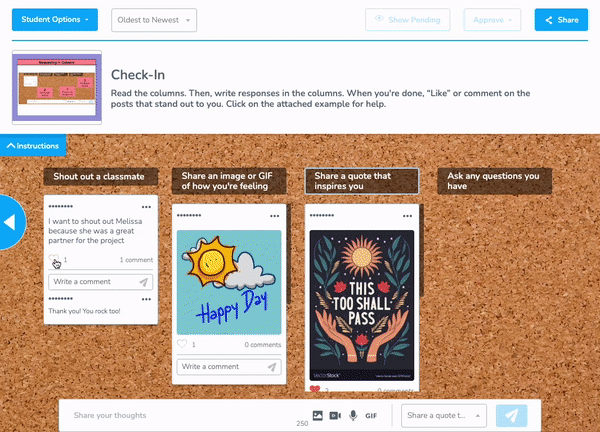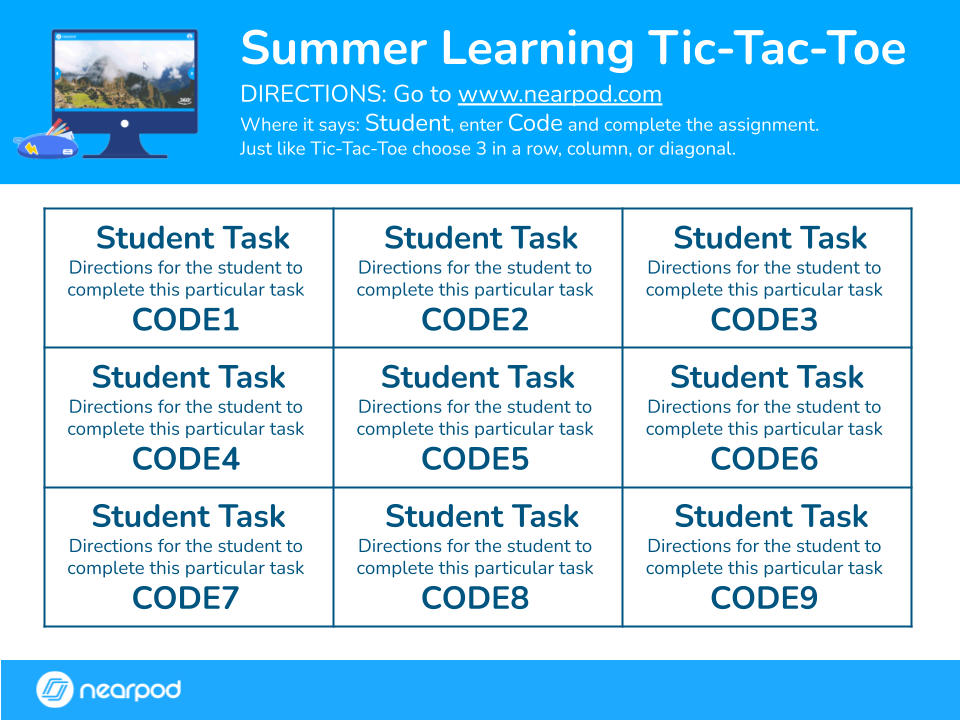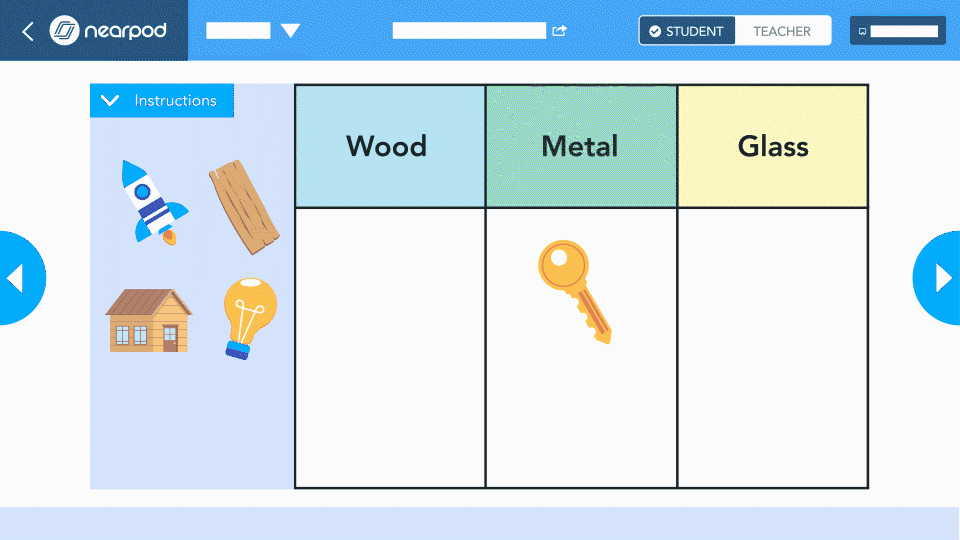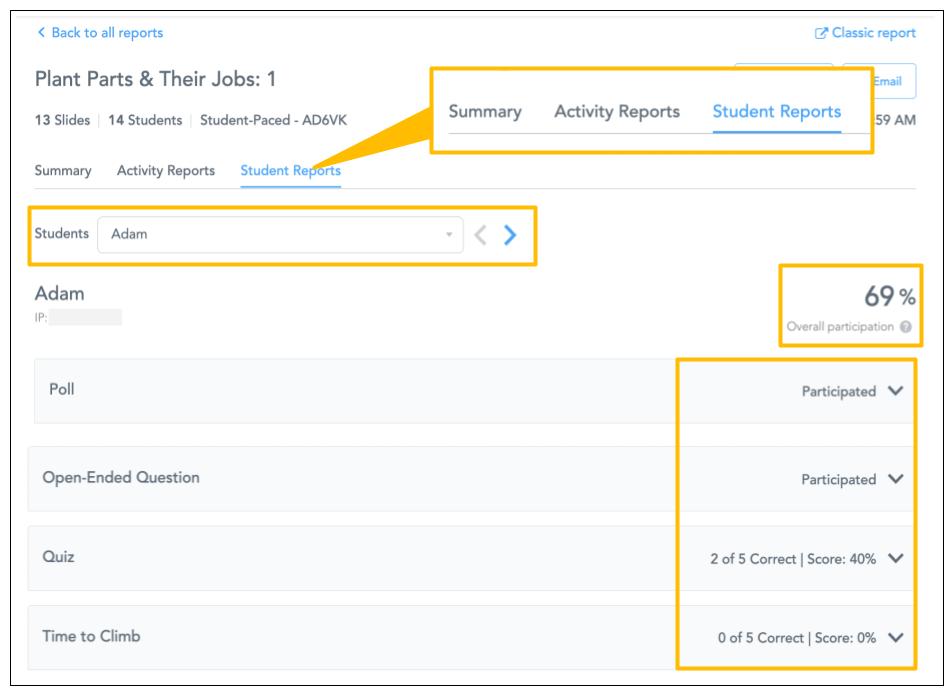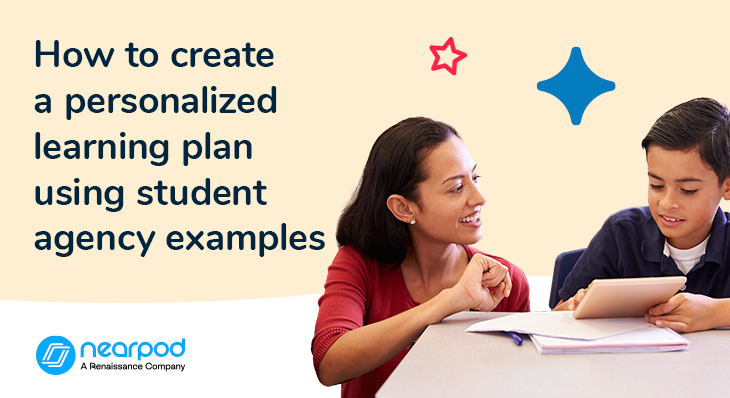
How to create a personalized learning plan using student agency examples
The concept of personalized learning is not new. Day in and day out, teachers strive to address individuals’ unique needs to encourage each student’s strengths while supporting the areas where they need more support. In special education, students receive an IEP: Individualized Education Plan, which is a legal document detailing the supports and opportunities a student may need. More and more educators are taking such an approach with all children instead of “teaching to the middle.” Yet, what are the concepts that support personalized learning in the classroom?
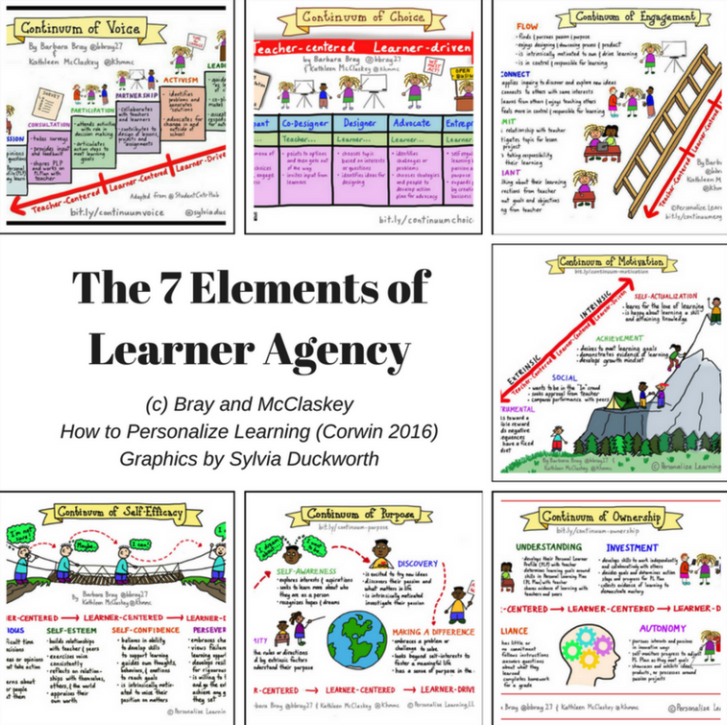
What is personalized learning?
The definition of personalized learning can vary. However, the U.S. Department of Education (2016) describes personalized learning as “instruction in which the pace of learning and the instructional approach are optimized for the needs of each learner. Learning objectives, instructional approaches, and instructional content (and its sequencing) all may vary based on learner needs.” The shift is in making instruction less teacher-centered and more student-driven. Barbara Bray and Kathleen McClaskey outline in their Stages of Personalized Learning Environments (PLE), Version 5 how agency is developed through seven elements: voice, choice, engagement, motivation, ownership, purpose, and self-efficacy.
This notion of agency goes hand in hand with personalized learning. Agency speaks to someone feeling they have control of and influence over their behaviors and actions; they feel they have the capacity or the ability to “get there” on their own. Personalized learning is often indiscriminately exchanged with individualized learning or independent learning, yet the terms vary just a bit in terms of intention. With personalized learning, the goal of instilling a sense of agency is foremost in educators’ minds. Personalized learning starts with the learner.
What are the benefits of personalized learning for students?
Due to the varying approaches to and definitions of personalized learning instruction, the body of research is slowly growing yet promising. However, it is commonly believed that the benefits include improved student outcomes and changes in attitudes, motivations, and behaviors. Early research by RAND Corporation and the Gates Foundation found positive indicators of student achievement. By the end of the 2014-15 school year, students who participated in personalized learning experienced a 3% improvement in both mathematics and reading. Particularly, those who began below the national average made substantial progress, nearing and eventually surpassing the national norms within two years. Regardless of achievement level, all students passed their comparison students in reading and math performance.
The role of technology in personalized learning
Technology plays a key role in personalized learning. One of the benefits of today’s modern technologies is the platforms, products, and tools that remove barriers so teachers can reach each and every individual student. With technological advancement, instruction can follow the learner’s lead and support with more individualized materials. Plus, with a much broader access to content, learning becomes more personalized to address the learner’s interests and curiosities. Technology allows for continuous monitoring and modifications, empowering educators to make more data-informed decisions.
Nearpod, a comprehensive K-12 platform, gives teachers personalized learning technology through its tools to actively engage students across the curriculum through its vast library of lessons and activities and its interactive features.
New to Nearpod? Teachers can sign up for free below to access these resources, interactive activities, and engaging lessons. Administrators can schedule a call with an expert to unlock the full power of Nearpod for schools and districts.
How to create a personalized learning plan using student agency examples
1. Voice
Often, teachers may talk about giving students “voice and choice” in the classroom when it comes to personalizing learning. The voice aspect speaks (literally!) to allowing students to share opinions and perspectives on what they want to learn about. What do they want to dig into? What do they have questions about? How do they want to learn more? By tapping into a child’s passions and curiosities, educators take an interest-driven approach to education. A turnkey example is found in many elementary classrooms when teachers give their students time for “Free Choice Friday,” a block of time during which students can engage in one of several learning centers or activity options. Students become contributing participants in their own learning journey.
Nearpod is a comprehensive learning platform in part because of the wealth of lessons and activities it provides. You can use Nearpod’s interactive assessment features to gain insight into what students want to learn more about. Use tools like Collaborate Board, Polls, or Open-Ended Questions to ask this question and see student responses in real time.
Next, search the lesson library to find a lesson that aligns with students’ interests. Across the subject areas and grade levels, Nearpod has a robust library of content to support diverse interests. You can use these lessons as they are or use them as inspiration to create your own. Teachers can search by keyword or filter by standard or publisher, making it simple to find content on a particular topic to feed a child’s hunger for more knowledge. This high-interest, quality content can lead to further engagement and a sense of ownership, responsibility, and increased self-efficacy. This can also lead to improved self-regulation behaviors and practices.
2. Choice
Hand in hand with voice comes choice. By positioning students in the driver’s seat of their own academic success, you can further students’ sense of accountability. They become more invested when they can follow their passions and make and determine what they want to consume and when. Such “voice and choice” increases a student’s commitment to and investment in learning. They begin to employ higher-thinking skills to set higher expectations for themselves. With this deeper engagement, students are more likely to face and work through challenges and setbacks more successfully.
In personalized learning, the learner often chooses or even creates the customized learning activity. Through Nearpod, you can share lesson codes on a choice board and encourage the learner to pick one to pursue at a learning center. Through Collaborate Board, you can present open-ended assignments, focus on project-based learning strategies, or weave in authentic assessment strategies for students. Personalized learning can achieve the same learning objectives but in a variety of different ways.
3. Engagement
Ask any teacher, and they will say that student engagement is a daily goal for their instruction. Without it, teachers have an uphill battle to convince, cajole, and persuade students to be interested and involved. Active learning is a key ingredient to a successful recipe for classroom engagement. With student engagement comes intrinsic motivation to commit to becoming a lifelong learner. Such engagement increases when educators embrace the benefits of personalized learning.
Nearpod has features to create engaging quizzes to check for understanding, exit quizzes, or summative tests. These formative assessment techniques can help you take a more personalized approach to providing support and more challenges to those who need it. With Nearpod’s real-time data, you have insights into which concepts and skills students are grasping or still struggling with.
4. Motivation
While we as educators can provide gold stars and other forms of extrinsic motivation, we all aspire to build students’ intrinsic motivation. Personalized learning plans seek to discover and encourage individuals’ personal passions and interests. We try to find ways to let the student lead their own learning by delving into what they are curious about, seeking out answers to their own questions, and finding personal satisfaction by having that “aha” moment on their own. According to Ryan & Deci, 2020, a child who is more intrinsically motivated tends to be more participatory, more attentive, and more engaged. Such involvement can then lead to more enthusiasm as well as better performance.
Not only can teachers find a wide breadth of content, but the interactive content addresses multiple learning styles, encouraging students to consume, connect, and create in a way that speaks to their strengths. Nearpod offers gamification to help motivate students to do their very best. Interactive activities like the Time to Climb quiz game help increase engagement and friendly competition while assessing student understanding. Such interactivity can bolster intrinsic and extrinsic motivation by providing feedback, encouragement, or reinforcement for completing a task well. You can find premade Time to Climb quizzes in the Lesson Library or create your own.
5. Ownership
Student ownership is just as it sounds—it is when students believe that they are in control of their learning and have a say in their own education. A sense of ownership comes from an established relationship between teachers and students that is based on mutual respect and trust. Teachers work diligently to create such a safe and positive classroom culture. According to the American Psychological Association: “When students feel a sense of ownership, they want to engage in academic tasks and persist in learning.” Many teachers build such a culture by having regular check-ins and mini-conferences with the students. This helps them understand where students are in the learning process, what they need to work on, and how best to achieve success. This pride of ownership translates into a sense of autonomy and independence that has benefits far beyond the classroom’s walls.
Nearpod encourages ownership by helping students reflect on their own learning needs at their own pace with the Student-Paced mode. During any Student-Paced lesson, students can take their time completing formative assessments and exploring informational slides, videos, VR Field Trips, or PhET simulations to cement their learning. This flexibility celebrates students’ achievements as they reach them, unencumbered by time constraints or peer pressures. A student’s sense of ownership complements and plays into the other elements of a personalized learning plan.
6. Purpose
All individuals, young and old, aspire to have a sense of purpose. As kids grow developmentally, they want to make sense of the world and find their place in it. Purpose in the classroom can come through understanding how learned skills have applicability to the real world, today’s society, and tomorrow’s professional dreams. Every teacher has probably heard the resounding refrain, “Why do I need to learn this?” By showcasing how activities and projects can build one’s readiness for life outside of school, students will develop a more sound sense of purpose when it comes to learning.
To support students in defining a sense of purpose, Nearpod can support teachers in providing a continuous feedback loop. Nearpod eases the friction of providing diverse content and adaptive interactivity by offering many different assessment tools. Using tools like Polls and Multiple-Choice Questions, students can self-check their understanding of a topic and gauge their progress toward goals. Couple quantitative data with live teacher input, and students receive continuous feedback to help personalize their instruction. Timely feedback means a student can practice and implement the feedback as immediate next steps, with no gap. The new teacher-to-student feedback feature on Draw It permits teachers to intervene immediately, identify misconceptions, or provide additional support to boost student engagement and achievement. Students will begin to develop their own sense of purpose when it comes to learning.
7. Self-efficacy
Name that movie: “If you build it, he will come.” In Field of Dreams, Kevin Costner’s character exhibited great self-efficacy. At its core, self-efficacy is an individual’s belief in or perception of their ability to reach goals based on their own competencies and behaviors. Therefore, self-efficacy is closely tied to one’s sense of aspirations. However, there are many influencing factors such as past experiences, modeling by and feedback from others, and one’s own emotional state. Students need to develop a strong sense of self-efficacy for academic success and personal well-being. Such self-confidence will help them find success not only in the classroom but in life.
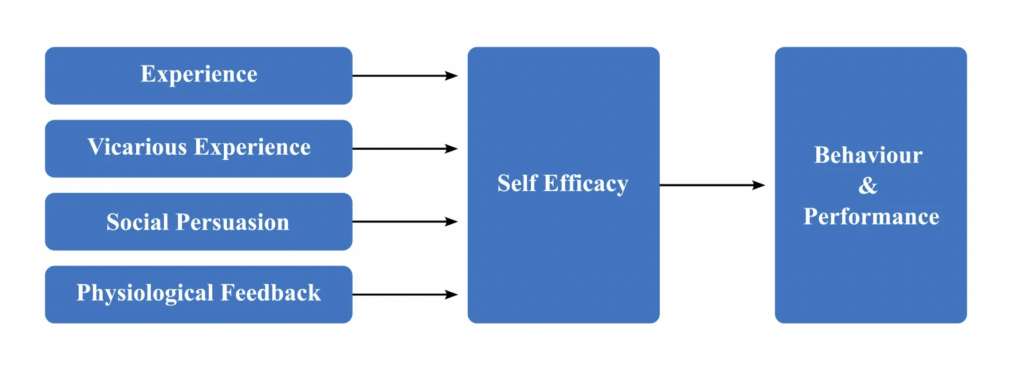
Nearpod offers a suite of resources called the 21st Century Readiness Program. Within this program, teachers can take advantage of social and emotional learning (SEL) materials from trusted organizations like Common Sense Education and more. Over 400 SEL lessons, activities, and videos underscore CASEL’s five core competencies. These SEL lessons and activities will encourage students to set lofty goals, build their confidence, and persevere through setbacks.
8. Targeted instruction
When it comes to targeted instruction, teachers align goals to students’ needs and vice versa. It is a continuous process in which educators must rely on data (in conjunction with a teacher’s intuition) through observations and assessments. Such intel then informs shifts and revisions to one’s learning plans. Targeted instruction is nuanced and requires a hefty dose of flexibility.
Nearpod supports targeted instruction because a wide range of content can be delivered to a whole class or individuals, all within the same instructional period. Nearpod’s real-time data and post-session reports give teachers a tangible dashboard of progress—or lack thereof—with a lesson and provide them with options for addressing the most diverse needs. As targeted instruction is a core pillar of personalized learning, do remember to celebrate even the small wins to develop that intrinsic motivation.
Start using Nearpod to create a personalized learning plan
As with most teaching endeavors, a hallmark of good personalized learning is getting to know your students, both academically and personally. Remember to ask a lot of questions and keep copious notes. This will help you hone your approach to reaching each and every child. Share personalized learning examples with your staff regarding voice and choice, engagement, motivation, ownership, purpose, and self-efficacy. Encourage students to become agents in their own learning pursuits. Showcase how such an investment in time and effort can yield exponential results regarding progress and enthusiasm for learning overall.
New to Nearpod? Teachers can sign up for free below to access these resources, interactive activities, and engaging lessons. Administrators can schedule a call with an expert to unlock the full power of Nearpod for schools and districts.

Darri Stephens is a dedicated LX (learning experience) designer, passionate about creating quality content and programs for kids, families, and educators. With MAs in Education from both Harvard and Stanford, and work experience at best-in-class ed tech organizations including Wonder Workshop, Nickelodeon, and Common Sense Education, she is steeped in the design thinking process and committed to agile and iterative project management, which has resulted in multi-award-winning programs and products.
